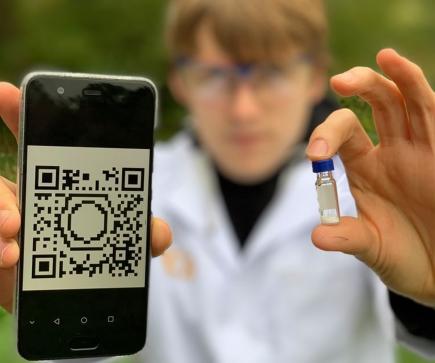Chemical QR codes: alternative methods for data storage

(09-11-2018)
Whether you think about bank accounts, YouTube videos or QR codes, everything is saved as zeros and ones, or data, on a computer. The storage equipment available might not be capable of holding all that information much longer.
Ghent University successfully investigates alternative data storage methods
There are two major issues. On the one hand, enormous quantities of heavy metals are needed to produce USB sticks or hard drives. On the other hand, you need huge, energy-consuming servers to keep all this information safe.
For that reason, scientists from Ghent University’s chemistry, biochemistry and computer science departments have joined forces to look for new ways of storing data. In this research effort, they were inspired by nature, where genetic information is stored in DNA.
Chemical QR code
The researchers developed a chemical process that allowed information, such as a piece of text or a QR code, to be stored in powder form. This information can then be read out by means of a biochemical method of analysis. As a final step, two programs were written to make the processing of information run fast and automatically. The first program makes sure that the data on the molecules can be analysed in seconds, the second program automatizes the translation process from the QR code to the molecules and vice versa. That’s how the information stored in the molecules can in fact link directly to a website, a city map or an app.
The results of this interdisciplinary effort have been published in the high impact journal Nature Communications.
This project is remarkable in the sense that an important share of it was carried out by chemistry student Annelies Landuyt as part of the Honours Award in Science program set up by Ghent University’s faculty of Sciences. This program encourages excellent students to carry out interdisciplinary research alongside their regular curriculum.
Media attention
The launch of this article got a lot of media attention:
Information and Ghent University departments involved
Professor Filip Du Prez
Centre of Macromolecular Chemistry (CMaC) - Department of Organic and Macromolecular Chemistry
M +32 494 40 76 85
Professor Peter Dawyndt
Department of Applied Mathematics, Computer Science and Statistics
Professor Bart Devreese
Department of Biochemistry and Microbiology